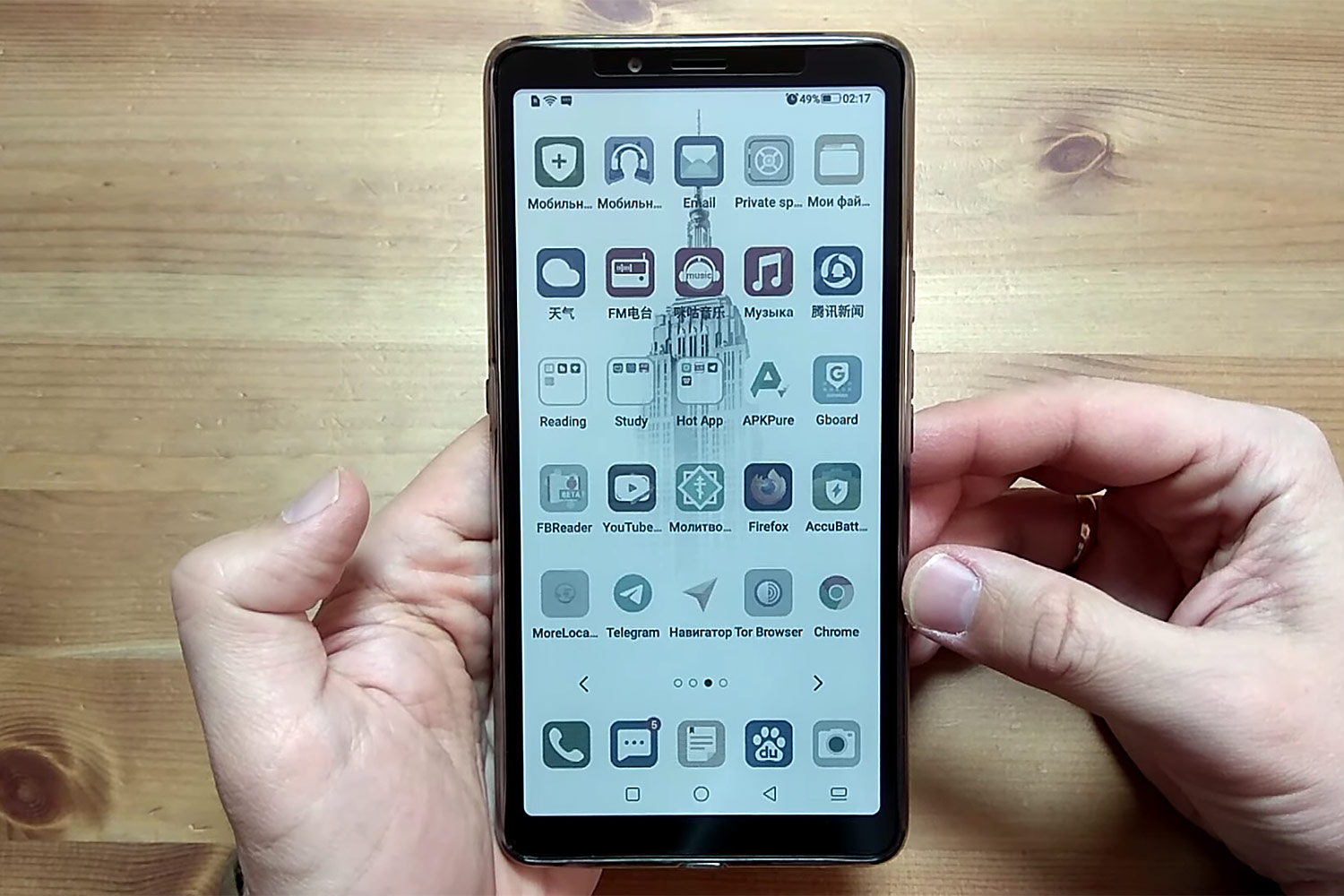It seems like it has taken forever, but colour e-ink phones are finally starting to arrive. Enter the Hisense A7 CC, with a 6.7-inch screen that can display 4096 colours at 100ppi.
Still a little low but getting there, it is no glossy magazine but rather a daily workhorse. Hisense is promoting this as an e-reader with a screen larger than the Kindle, technically true for most models. It even comes with a reading mode to stop those annoying pop-ups. It has a 4,770mAh battery that should last days on normal mode and up to two weeks on Super Saver mode, miniSD adding to the 128GB storage and 6GB of RAM to play with. It has a fingerprint scanner on the back and will cost about US$540 (19,400 baht) on eBay. It has a 3.5mm jack and a speaker with a USB-C charging port. It supports most 5G networks and runs Android 10. Like the Onyx Boox line of e-readers it comes with four different refresh modes so you can watch a video or have it set for static text or pictures. The modes are assignable per app, which is rather smart. Since this is a Chinese phone the downside is there is no Google Pay, but since you can use something like the open source GApps alternative or sideload apps, this is more of an annoyance. If you are in the market for such a device then you should probably start, but not limit, your search here.
- I need to apologise to some readers about my recommendation of A Thousand Brains: A New Theory Of Intelligence. The first two thirds are excellent, after that however the author turns activist and starts on his favourite unsupported theories that detracts from the earlier material. If you want more detail you can read my GoodReads review, but be aware of the activism in the latter parts.
- Microsoft did it again, this time breaking Audio with a patch, even for Teams, in some computers. This came from the July 26 update but they have fixed it in the latest one. The fix is to use the Microsoft's Known Issue Rollback or the latest patch. There is an interesting caveat here for the latest update and KIR process: it will only work for those systems yet to experience it. So, if it has already happened to you then you'll need to wait until Microsoft has a better fix or try reinstalling your audio drivers. They do have an interesting definition for the word fixed. Good luck.
- The Chip 4 semiconductor coalition is an alliance between Taiwan, the US, Japan and South Korea and the first meeting is scheduled soon. China doesn't like it because they aren't invited. China describes the initiative as "a US-backed alliance to create a semiconductor barrier against China". With the current world chip shortage there are hopes this alliance will stabilise supply in the future. Fingers crossed.
- In today's random piece of info, Strategy Analytics reports that iOS adoption of the worldwide smartphone market is at a record low of 12.1%, with Android accounting for 87.5% of the market. The Apple iPad holds 31.5% share of the global tablet market, down from 38% in the previous quarter. Now you know.
- By now most readers will be aware of (Gordon) Moore's Law, which states that the number of transistors on a microchip doubles roughly every two years, as the cost of computers is halved. Or more simply they are better, faster and cheaper over time. Intel CEO Pat Gelsinger was talking about their advanced packaging technologies at the recent Hot Chips virtual conference and how they will keep this trend going. Today there are about 100 billion transistors on a chip and the expectation is that this will reach 1 trillion by 2030, using newer approaches to chip design.
- Intel is planning to do this by creating functional blocks that connect to make the desired end package a 3D structure based on their ribbon FET technology. Think different coloured Lego blocks connected together. The ribbon FET is Intel's version of the Gate-All-Around (GAA) transistor architecture, where the gate material wraps entirely around the conducting channel. Intel is supporting a standard on how the pieces fit together and are part of the Universal Chiplet Interconnect Express initiative being an industry standard for die-to-die interconnects. This would theoretically allow you to get the different pieces from different manufacturers and hook them together for the desired functionality.
- How do you know the person you are talking with on a Zoom call is actually them? These days, not so much. Hackers recently made a deep fake AI hologram of a PR exec to scam cryptocurrency digital assets via Zoom video calls. The executive found out about it when people started calling him to thank him for the virtual meetings. This is the latest example of cybercriminals scamming the likes of executives on Twitter, LinkedIn, Telegram and other platforms. Be sure you are talking to whom you think you are, even on a video call.
James Hein is an IT professional of over 30 years' standing. You can contact him at jclhein@gmail.com.

